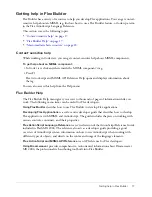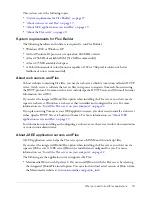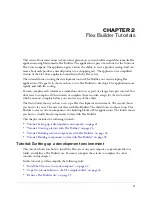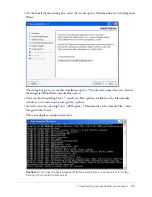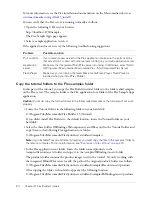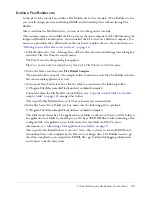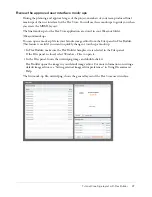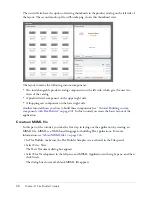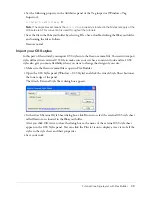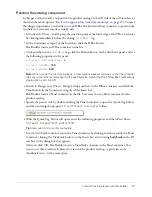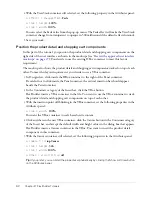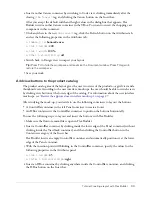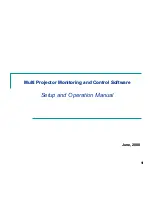
18
Chapter 1: Getting Started with Flex Builder
Macromedia website resources
The Macromedia website contains the following resources to support Flex developers:
Flex Builder support pages
on the Macromedia website at
www.macromedia.com/go/
fb_support/
helps you get the most out of Flex Builder. The website is updated regularly with the
latest information on Flex Builder, plus advice from expert users, examples, tips, updates, and
information on advanced topics.
The Flex Support Center
on the Macromedia website at
www.macromedia.com/go/
flex_support/
provides information on Flex technology.
The Flex Documentation Center
on the Macromedia website at
www.macromedia.com/go/
flex_docs/
provides product manuals, tutorials, and articles about Flex.
Macromedia Developer Center
on the Macromedia website at
www.macromedia.com/go/
devnet/
provides tools, tutorials, and more for all Macromedia products.
The Flex online forum
on the Macromedia website at
www.macromedia.com/go/
flex_newsgroup
.
What you need to build Flex applications
To develop and test Flex applications with Flex Builder, you need a computer running Microsoft
Windows 2000 or Windows XP. For more information, see
“System requirements for Flex
Builder” on page 19
.
You also need the Flex server (see
“About the Flex server” on page 20
), which requires the
following software:
•
An HTTP web server (see
“About web servers and Flex” on page 19
)
•
A J2EE application server (see
“About J2EE application servers and Flex” on page 19
)
You can quickly set up a Flex server by using the HTTP web server and J2EE server installed with
the Flex server. For added convenience, you can install and run this software on the same
computer as Flex Builder. For more information, see
“Install the Flex server on your computer”
on page 22
.
You can also configure the Flex server to work with third-party web servers and J2EE servers. For
more information, see the Flex installation guide on the Macromedia website at
www.macromedia.com/go/flex_install/
, or consult your system administrator. Generally, it’s best
to match your development environment to your production environment as closely as possible.
For example, if you use Tomcat in your production environment, you may want to configure
your development environment around Tomcat.
A Flex best practice is to place the code implementing the functionality or business rules of the
application in a business layer. Flex is designed for building the presentation layer (or user
interface) of multi-tier enterprise applications. There is no inherent database support. To access
databases, you must connect your presentation layer to a business layer. For more information, see
“Flex data services” on page 152
. The development of the business and data layers is beyond the
scope of this guide.
Summary of Contents for FLEX BUILDER-USING FLEX BUILDER
Page 1: ...Using Flex Builder...
Page 116: ...116 Chapter 4 Building a Flex User Interface Visually...
Page 144: ...144 Chapter 6 Working with Data...
Page 154: ...154 Appendix A Basic Flex Concepts...














